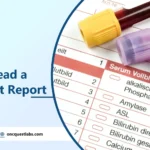When you have a cut or a pimple that pops, you might see pus, which is a bunch of white blood cells fighting germs. This is like your body’s soldiers defending you. If you see pus in your pee, it could mean there’s an infection in your pee system, like your kidneys or bladder. This isn’t normal and needs a doctor to check and treat you so you can feel better.
Contents
Overview of Pus Cells in Urine
| Topic | Explanation |
| What are Pus Cells in Your Urine? | Pus in urine, called pyuria, is made of white blood cells. A small amount is okay, but too much can be a problem. It can be sterile (no germs) or non-sterile (with germs). |
| Are They Normal? | A few pus cells in urine are normal, but too many can signal a kidney or urinary infection. Cloudy or colored urine, frequent urination, or pain while peeing are signs to see a doctor. |
| Causes of Pus Cells in Urine | Various reasons include urinary tract infections (UTIs), kidney infections, sexually transmitted infections (STIs), inflammation, kidney stones, hormonal changes, and other issues. |
| Symptoms of Pus Cells in Urine | Symptoms include cloudy or bloody urine, frequent urination, pain while peeing, bad-smelling urine, and abdominal pain. Prompt medical attention is crucial for proper diagnosis. |
| How Is It Diagnosed? | Diagnosis involves urine tests to count pus cells and check for infections, along with other tests like urine culture, ultrasounds, and blood tests to identify underlying issues. |
| How Can It Be Treated? | Treatment targets the underlying cause. Antibiotics may be prescribed for infections, while drinking water helps flush bacteria. Surgery might be needed for conditions like kidney stones. |
| Complications of Pyuria | Pyuria can lead to serious issues like sepsis, preterm birth, repeated UTIs, and kidney failure if not addressed promptly and treated correctly. |
What are Pus Cells in Your Urine?
Pus in urine is called pyuria. A little bit is okay because it’s just dead white blood cells, but too much can be a problem. Pyuria has two types: one without germs (sterile) and the other with germs (non-sterile). Sometimes, even if your pee shows no germs, you might still have an infection. Tests might miss some infections, so more tests might be needed to figure out what’s wrong and how to treat it.
Normal Range of Pus Cells in Urine?
It’s fine to have a few pus cells in your pee, but if there are too many, it might mean a kidney or urinary infection. The doctor will check with a urine test. If your pee looks cloudy or changes color suddenly, see a doctor. Normally, you should have 0 to 5 pus cells in your pee. If it’s more, like 10 to 12, it could be an infection. This can happen due to hormonal issues or other health problems. If the tests show lots of pus cells, the doctor might do more tests to check for things like sexually transmitted diseases.
Causes of Pus Cells in Urine
Pus cells in urine can happen because of different reasons:
- Urinary Tract Infections (UTIs): Germs cause infections in the bladder, urethra, or kidneys.
- Kidney Infections (Pyelonephritis): Severe UTIs can affect the kidneys and cause pus cells in urine.
- Sexually Transmitted Infections (STIs): Some STIs, like gonorrhea or chlamydia, can also lead to pus cells in urine.
- Inflammation: Swelling in the urinary tract, like with interstitial cystitis, can cause pus cells in urine.
- Kidney Stones: Sometimes, kidney stones can bother the urinary tract and lead to pus cells.
- Prostatitis: Infections or swelling in the prostate gland can cause pus cells, especially in men.
- Hormonal Changes: Changes in hormones, such as during pregnancy, can sometimes increase pus cells in urine.
- Other Health Issues: Some medical problems with the urinary system or immune system can also cause pus cells in urine.
Symptoms of Pus Cells in Urine
Pus cells in urine usually mean a urinary infection. In severe cases, they can show bigger health problems. If you have these symptoms, get a urine test:
- Pee looks cloudy
- Pee color or how it feels changes
- Blood in pee
- Peeing more often
- It hurts when you pee
- Pee smells bad
- Hard to breathe
- Pain in belly or pelvis
- Fever
- Feeling sick, like throwing up
- Strange stuff from vagina
Go to a doctor quickly to find out what’s wrong and get the right treatment.
How Is It Diagnosed?
If you see pus cells in your urine test, tell your doctor for more tests to find out why. These tests might be:
- Pus cells in urine test: They look at your pee under a microscope to see how many pus cells are there.
- Urine culture: They grow bacteria from your pee to check if an infection is causing pus cells.
- More tests: If the pus cells are from something else, you might need ultrasounds, kidney tests, or blood tests to know what’s happening.
How Can It Be Treated?
To lower pus cells in your pee, you need to treat the main health problem. If bacteria cause it, the doctor might give you antibiotics. Drinking lots of water helps flush out bacteria. Pyuria shows there’s another problem, not a disease itself, that needs treatment. Sometimes surgery is needed for conditions like kidney stones.
Complications of Pyuria
While some people might have a bit of pus in their pee without a big issue, if it’s linked to a health problem, it can cause serious complications such as:
- Sepsis: This is a severe infection that spreads throughout the body.
- Preterm birth or having a baby with low weight if you’re pregnant.
- Repeated urinary tract infections (UTIs).
- Kidney failure, which means your kidneys stop working properly.
Frequently Asked Questions
Q1: What is pus cells in urine symptoms and treatment?
A1: Pyuria means having pus in your pee. The main reason is UTIs, but it can also happen due to STIs, viruses, or certain medications. A common sign is cloudy and bad-smelling pee. Treatment focuses on dealing with the reason behind it.
Q2: What is the best medicine for pus in urine?
A2: Pyuria is treated based on why it happens. If it’s from a UTI, you’ll get antibiotics like trimethoprim-sulfamethoxazole or nitrofurantoin for a short time. Antibiotics can also work for bacterial STIs and tuberculosis.
Q3: What is the danger level of pus cells in urine?
A3: The normal amount of pus cells in urine is 0-5. If there are 8-10 pus cells, it could mean a bacterial infection like UTI. Doctors might do a urine culture to find the right antibiotics to treat it.



![Blood Test for Hair Loss [Male/Female] Blood Test for Hair Loss](https://oncquest-blog.s3.ap-south-1.amazonaws.com/blog/wp-content/uploads/2023/12/12044200/Blood-Test-for-Hair-Loss.webp)

